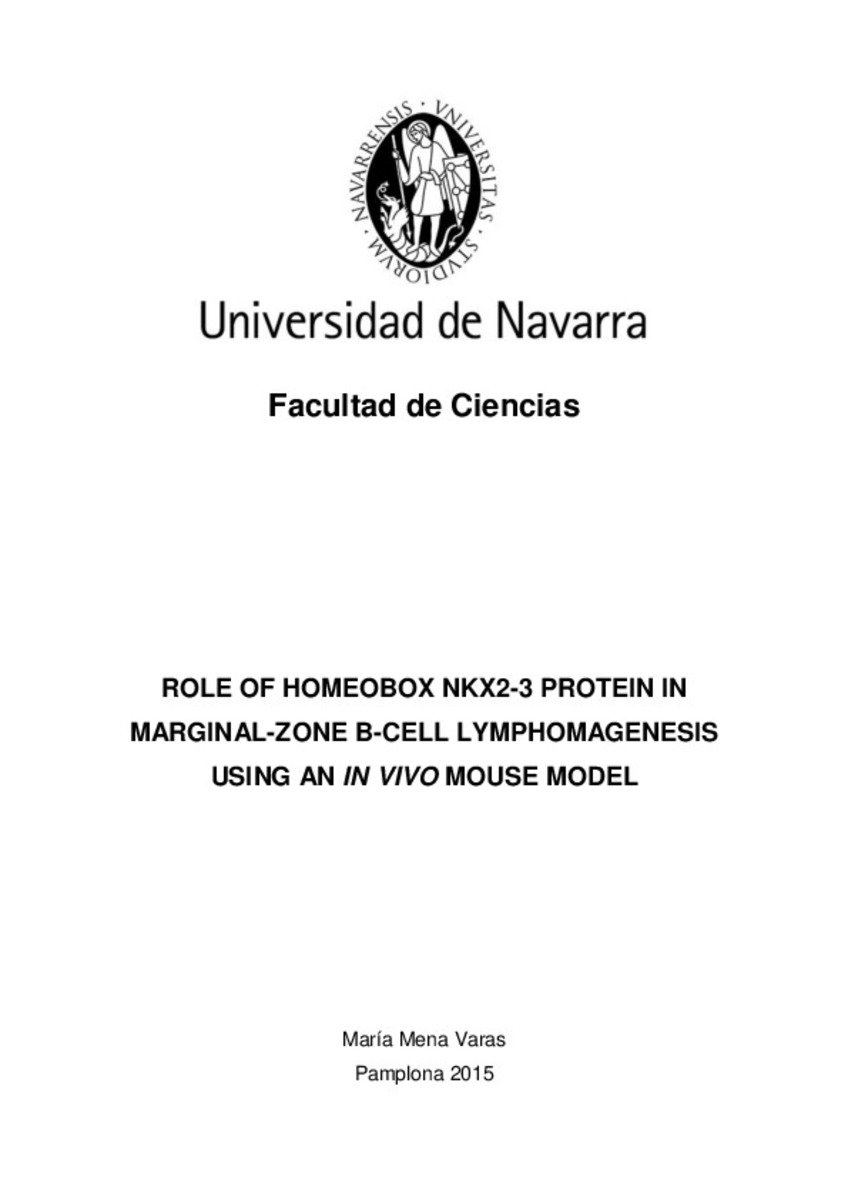Role of homeobox NKX2-3 protein in marginal-zone B-cell lymphomagenesis using an in vivo mouse model
Palabras clave :
Biología molecular
Genética molecular
Materias Investigacion::Ciencias de la Salud
Fecha de publicación :
2016
Fecha de la defensa:
21-sep-2015
Cita:
MENA VARAS, María. “Role of homeobox NKX2-3 protein in marginal-zone B-cell lymphomagenesis using an in vivo mouse model”. Martínez-Clíment, José Ángel (dir.), Robles Cortés, Eloy Francisco (codir.). Tesis doctoral. Universidad de Navarra, Pamplona, 2015
Aparece en las colecciones:
Estadísticas e impacto
0 citas en

0 citas en

Los ítems de Dadun están protegidos por copyright, con todos los derechos reservados, a menos que se indique lo contrario.







